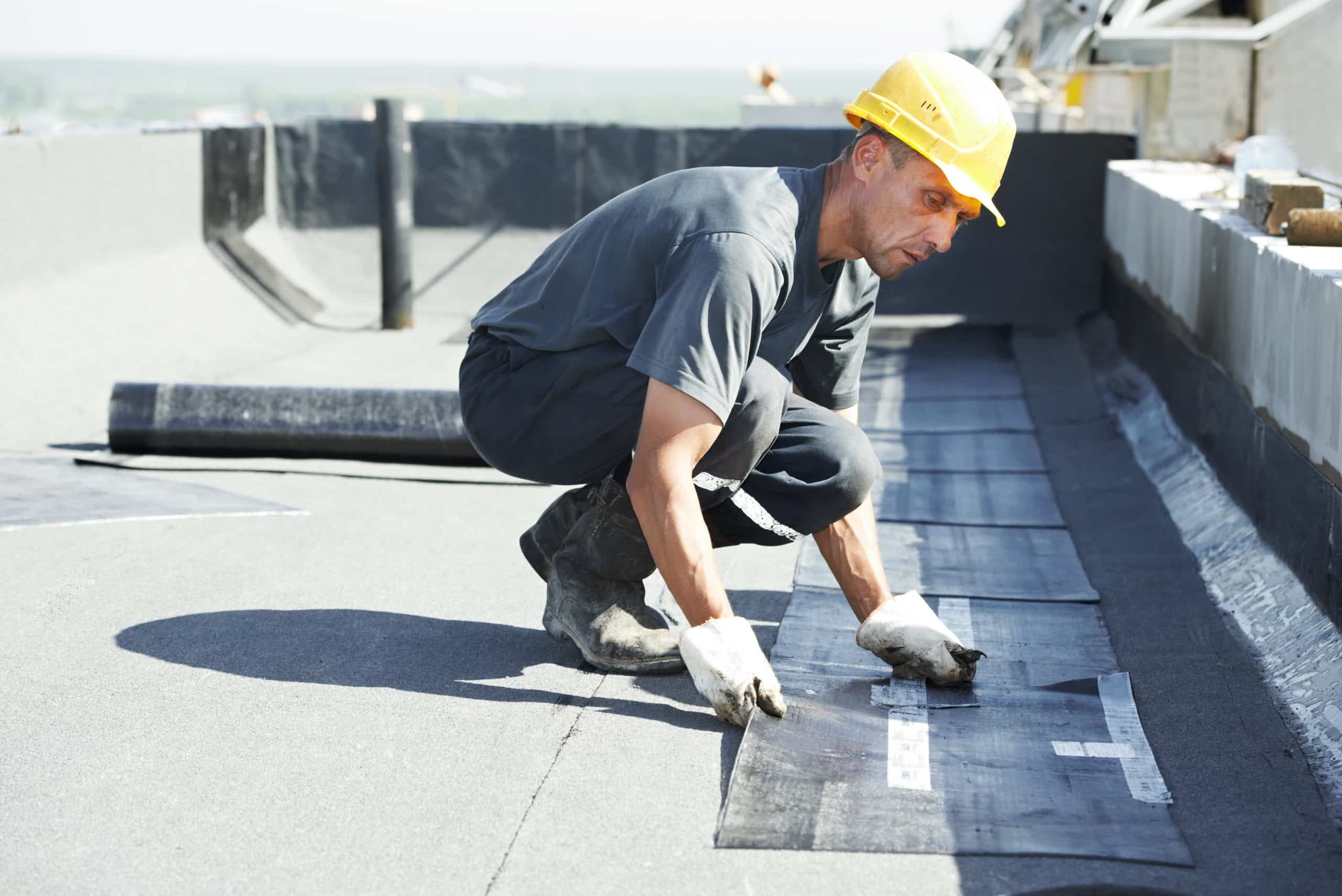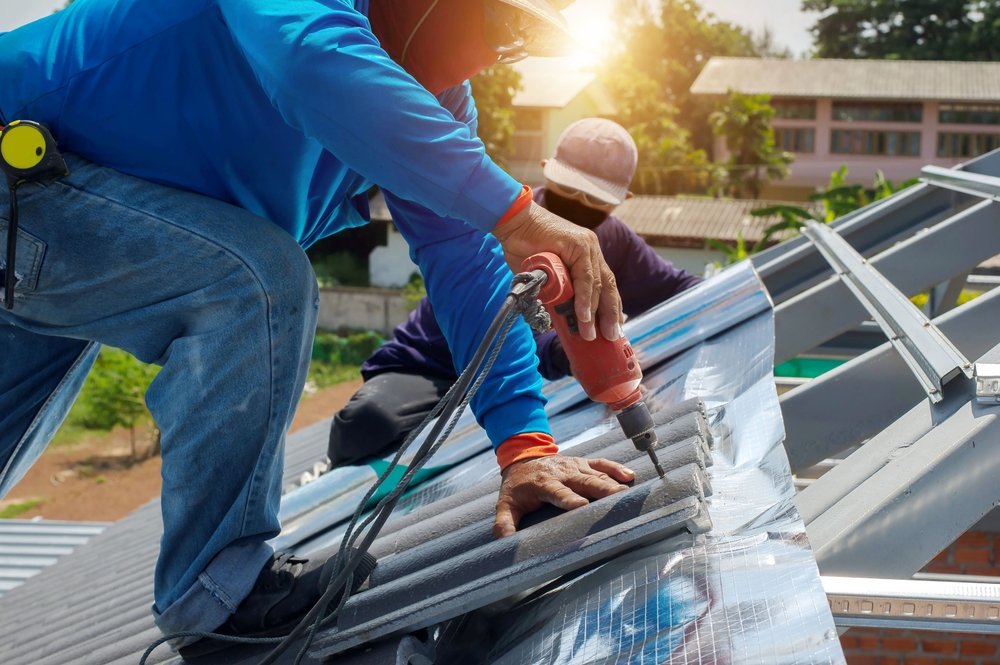Roofers Oahu: Expert Roof Installations and Repairs
Wiki Article
Comprehending the Various Sorts Of Roofings: A Comprehensive Overview for Homeowners
With a range of choices-- varying from the conventional gable to the modern level-- each kind presents one-of-a-kind benefits and difficulties that should line up with the house owner's specific demands and ecological considerations. As we discover the details of different roofing types, it becomes evident that one dimension does not fit all; the best selection may stun you.Saddleback Roof
Saddleback roofs, defined by their triangular form, are among the most prominent roof covering designs due to their simpleness and efficiency in dropping water and snow. This layout includes two sloping sides that meet at a ridge, enabling efficient drain and minimizing the danger of water buildup. The steep pitch generally connected with gable roof coverings boosts their capability to manage hefty precipitation, making them appropriate for numerous climates.Along with their functional advantages, saddleback roofs provide visual flexibility. They can be adjusted to various building designs, from typical to modern homes. The style can also fit added features such as dormer home windows, which enhance all-natural light and ventilation in the attic room space.
Moreover, saddleback roofs supply ample area for insulation, adding to energy effectiveness. Homeowners can choose from a variety of roof materials, including asphalt roof shingles, steel, and tiles, further boosting modification choices.
Regardless of their advantages, saddleback roofs may call for added support in areas prone to high winds or hefty snowfall. On the whole, the saddleback roof continues to be a preferred selection because of its blend of functionality, longevity, and visual allure.
Flat Roofs
Flat roofs are frequently acknowledged for their minimal layout and sensible applications, particularly in industrial and commercial settings (oahu roofing). These roof coverings feature a virtually straight or straight surface, which permits very easy building and flexible room use. While they might lack the aesthetic allure of pitched roofings, flat roofs supply numerous advantages, especially in metropolitan atmospheres where taking full advantage of area is vitalOne of the key advantages of flat roofing systems is their accessibility. Property owners can utilize the roofing system space for various functions, such as roof yards, terraces, or solar panel installments. Additionally, flat roofings are normally much more cost-efficient to install and keep compared to their sloped counterparts, as they call for less materials and labor.
Usual products utilized for level roofings include built-up roof covering (BUR), changed asphalt, and single-ply membranes, each offering distinctive advantages. Generally, level roofs offer as a adaptable and functional selection for numerous property owners and services alike.
Hip Roof Coverings
Hip roofing systems are defined by their sloped sides that converge at the top, creating a ridge. This style is unique from saddleback roofs, as all four sides of a hip roof covering slope downwards towards the wall surfaces, supplying a much more steady framework. The angle of the inclines can vary, enabling for adaptability in architectural aesthetics and capability.One of the main advantages of hip roofings is their capacity to withstand hefty winds and adverse weather. The sloped surfaces enable far better water drainage, lowering the threat of leaks and water damage. Additionally, hip roofing systems supply raised attic room room, which can be made use of for storage space and even transformed right into livable areas.
Nonetheless, building a hip roofing system can be much more pricey and intricate than simpler roofing system kinds, such as gable roofing systems. The additional product and labor included in developing the inclines and making sure proper architectural integrity can result in greater expenses. Regardless of these downsides, numerous property owners prefer hip roofs for their sturdiness, aesthetic charm, and potential for power efficiency.
Mansard Roofs
Mansard roofs, frequently acknowledged by their special four-sided style, function 2 inclines on each side, with the reduced incline see page being steeper than the top. This building style, originating from France in the 17th century, is not only cosmetically appealing but functional, as it maximizes the usable room in the upper floors of a structure. The high reduced incline enables even more clearance, making it a suitable option for attics or lofts, which can be exchanged living rooms.Mansard roofings are identified by their versatility, fitting numerous building designs, from typical to contemporary. They can be constructed with different materials, consisting of asphalt tiles, slate, or steel, providing home owners with a variety of options to suit their preferences and budget plans. Additionally, the design enables the combination of dormer windows, improving all-natural light and air flow in the upper degrees.
Nonetheless, it is vital to consider the possible drawbacks. Mansard roofings might call for more maintenance due to the intricacy of their style, and their high slopes can be testing for snow and rainfall runoff. Overall, mansard roofing systems incorporate sophistication with functionality, making them a preferred choice amongst property owners seeking distinctive building attributes.
Lost Roofing Systems
As homeowners progressively seek simplicity and functionality in their architectural layouts, shed roofing systems have actually arised as a popular selection. Defined by a solitary sloping plane, a shed roof provides a minimal visual that complements various home styles, from modern to rustic.Among the key advantages of a shed roofing is its uncomplicated construction, which typically equates to decrease labor and material expenses. This style enables efficient water drainage, minimizing the threat of leaks and water damage. In addition, the upright incline supplies sufficient space for skylights, improving natural light within the inside.
Lost roofings likewise supply adaptability in terms of usage. They can be effectively incorporated into enhancements, garages, or outdoor frameworks like sheds and structures. Furthermore, this roofing system style can suit various roofing materials, including metal, asphalt shingles, or even eco-friendly roofings, straightening with environment-friendly campaigns.
Nevertheless, it is important to take into consideration local climate problems, as hefty snow loads might require changes to the roof covering's angle or structure. On the whole, lost roof coverings offer a useful and visually pleasing choice for property owners wanting to make best use of capability without compromising style.
Conclusion


Gable roof coverings, identified by their triangular form, are among the most prominent roof covering styles due to their simpleness and effectiveness in dropping water and snow. oahu roofing. The steep pitch frequently linked with gable roof coverings enhances their ability to deal with hefty rainfall, making them appropriate for different climates
While they might lack the aesthetic appeal of pitched roofs, level roof coverings offer countless benefits, specifically in urban environments where making best use of room is crucial.

Report this wiki page